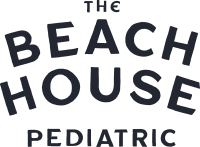Oral
While visiting the dentist for check-ups is important, a big part of your child’s oral care starts at home! Explore below for oral hygiene and diet basics. For personalized recommendations, schedule an appointment for your child today!

Perinatal and Infant Oral Health
The American Academy of Pediatric Dentistry (AAPD) recommends pregnant people continue receiving oral healthcare during pregnancy. Studies show that gum disease, or periodontal disease, can increase the risk of preterm birth and low birth weight. Talk to your doctor or dentist about how you can prevent gum disease during pregnancy.
And, did you know, mothers with poor oral health have a greater risk of passing the bacteria that cause cavities on to their infants and toddlers?
To decrease this risk, follow these simple steps:
- Visit your dentist every six months for routine care.
- Brush twice a day and floss once daily to eliminate bacterial plaque.
- Eat a healthy diet and have foods and drinks that are high in sugar and starch in moderation.
- Use a fluoride toothpaste with the ADA seal of approval, and rinse every night with an alcohol-free, over-the-counter mouth rinse with .05 % sodium fluoride in order to reduce plaque levels.
- Don’t share utensils, cups or food as it can cause the transmission of cavity-causing bacteria to your children.
Preventing Baby Bottle Tooth Decay (Early Childhood Caries)
Baby bottle tooth decay is a serious form of decay that occurs in very young children. It’s caused when an infant’s teeth are exposed to liquids that contain sugar, including milk (even breast milk), formula, fruit juice and other sweetened drinks, frequently and for long durations.
Putting a baby down for a nap or bedtime with a bottle containing anything other than water can cause severe and rapid tooth decay. This is because the sugary liquid sits on the infant’s teeth, giving plaque bacteria the opportunity to create enamel-eroding acids.
If you have to give your baby a bottle to help them fall asleep, make sure it only has water in it. If your infant can’t fall asleep without a bottle containing their usual sweetened drink, phase it out by gradually diluting the beverage with water over a two- to three-week period.
After each feeding, use a damp washcloth or a moistened gauze pad to wipe your baby’s gums. This will remove plaque.
Brushing and Flossing Kids’ Teeth
Brushing Tips:
- Starting at birth, clean your infant’s gums after feedings with a wet washcloth or moistened gauze pad.
- As soon as your child’s first tooth erupts, start brushing it with a soft-bristled toothbrush.
- For little ones under the age of 2, use a small “smear” of toothpaste, no larger than a grain of rice.
- For kids ages 2 to 5, use a “pea-size” amount of toothpaste.
- Use an ADA-accepted fluoride toothpaste and make sure your child does not swallow it.
- Parents should brush their child’s teeth until they are old enough to do a good job on their own.
Flossing Tips:
- Flossing is essential for removing plaque between the teeth and under the gumline where a toothbrush can’t reach.
- Start flossing your child’s teeth as soon as any two teeth touch.
- Be sure to floss your child’s teeth at least once daily until they can do it alone.


Good Diet = Healthy Teeth
Like the rest of the body, the teeth, bones and the soft tissues of the mouth need proper nutrition to stay healthy. Kids should eat a variety of foods from the five major food groups and enjoy sugar and simple carbohydrates, which feed cavity-causing bacteria, in moderation. Unfortunately, a lot of snacks that kids eat can lead to tooth decay. And the more often kids snack, the higher the risk for cavities.
The length of time that food remains in the mouth plays a part too. For example, a lollipop or hard candy dissolves slowly and stays in the mouth for a while, prolonging the acid attacks on tooth enamel. When your child does need a snack, choose nutritious foods that don’t cause cavities like vegetables, nuts, low-fat yogurt and low-fat cheese.
Don’t Forget About Beverages
As for beverages, we recommend stopping the use of sippy cups by your child’s first birthday. If your little one drinks out of a sippy cup, fill it with water only (except at mealtime). By filling the sippy cup with liquids that contain sugar (including milk, fruit juice, sports drinks, etc.) and allowing a child to drink from it throughout the day, it soaks their teeth in cavity-causing bacteria.
If your child plays sports, have them hydrate with water instead of sports drinks. Due to the high sugar content and acids in sports drinks, they’re notorious for eroding enamel, which can lead to cavities. If sports drinks are consumed, reduce the frequency and contact time, swallow them immediately, and neutralize the effect by alternating sips of water with the drink.



